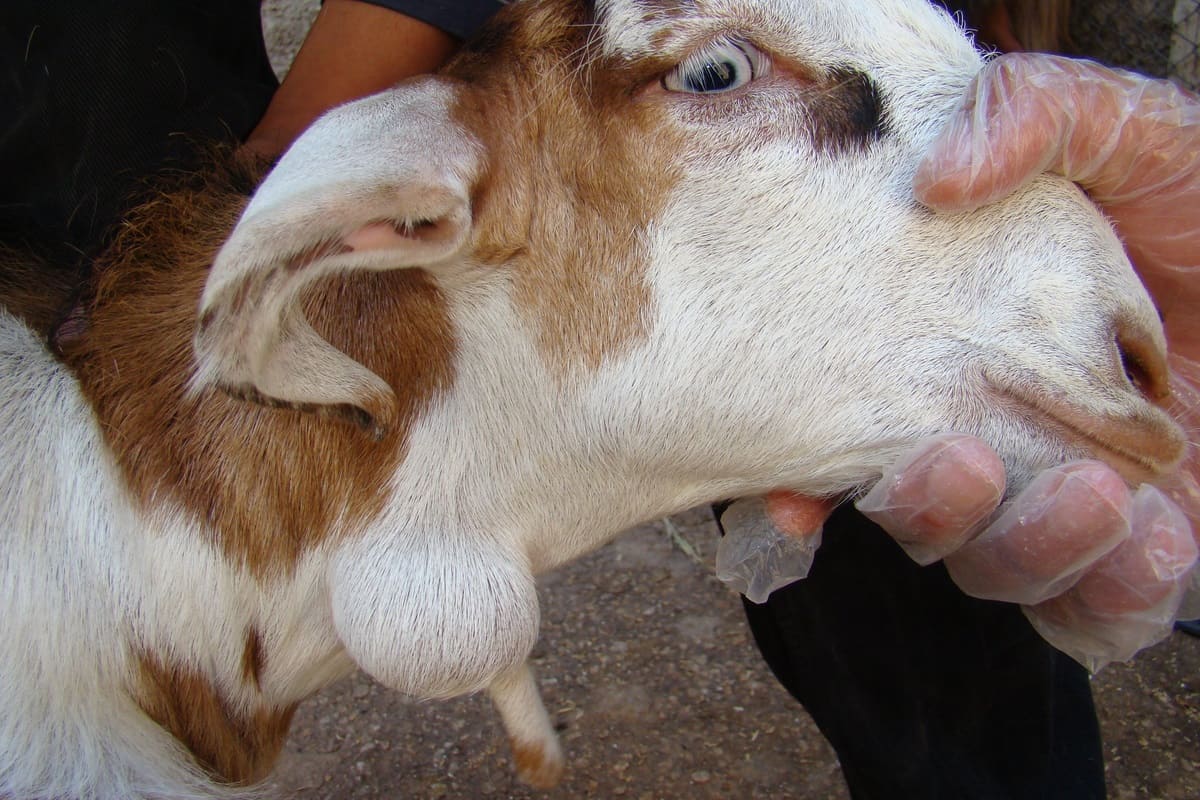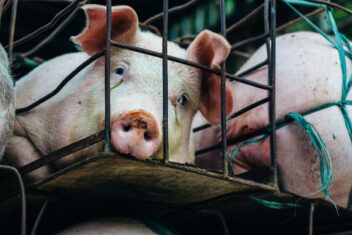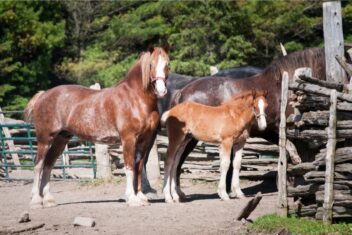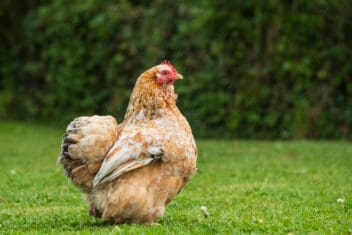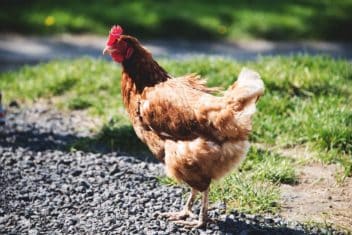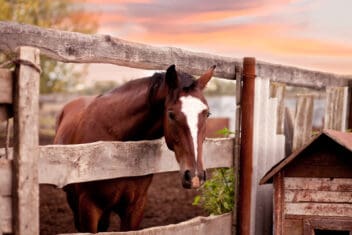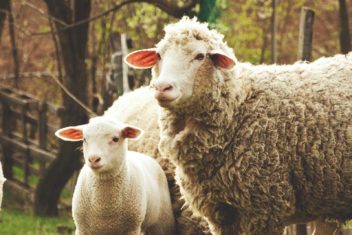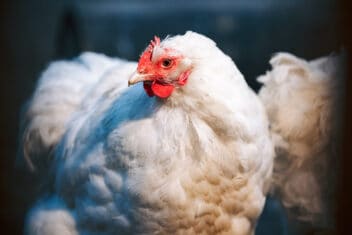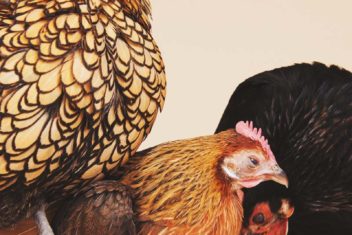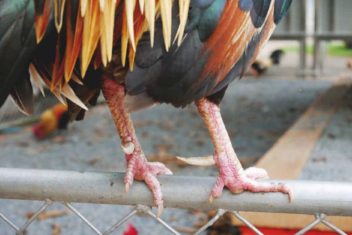Whenever I get sick, I notice that my lymph nodes tend to get swollen. It doesn’t matter whether I have strep throat, the flu, or the common cold. Like clockwork, my lymph nodes become inflamed and tender whenever I’m feeling under the weather.
It’s not just us humans who have these kinds of telling lymph nodes. In fact, sheep and goats also have them. As with humans, the lymph nodes on goats and sheep play an important role in the immune system. They help store white blood cells and filter foreign particles to pinpoint infections.
Sheep and goats have lymph nodes in other areas of their body, like in the abdomen.
In a healthy sheep, these lymph nodes will be smooth and clear. However, sheep who are suffering from a bacterial infection known as caseous lymphadenitis, often abbreviated to CL, may have lymph nodes that are abscessed and blemished.
This disease can cause serious problems in a flock – although it’s still relatively uncommon in North America, it’s important to be on the lookout for it so that you can take action if needed.
What is Caseous Lymphadenitis?
CL is a chronic infection of both goats and sheep caused by a specific type of bacteria named Corynebacterium pseudotuberculosis. This bacteria causes abscesses to form in the lymph nodes that are found externally on the abdomen and neck.
However, it can also cause abscesses internally, including on the kidneys, liver, udder, and lungs.
As you might expect, these abscesses can cause serious health problems. The bacteria spread easily from animal to animal, making it a contagious disease that can be tough to beat.
CL is transmitted easily from animal to animal and the bacteria can survive on untreated surfaces for quite some time. As the abscesses get bigger, they rupture, further spreading the bacteria. Nasal secretions can spread bacteria, too.
Caseous lymphadenitis is potentially transmissible to humans, though not much research has been done on the effects of CL on people. Just make sure you wear protective clothing and gloves whenever working with an animal suspected to have CL.
Symptoms of Caseous Lymphadenitis
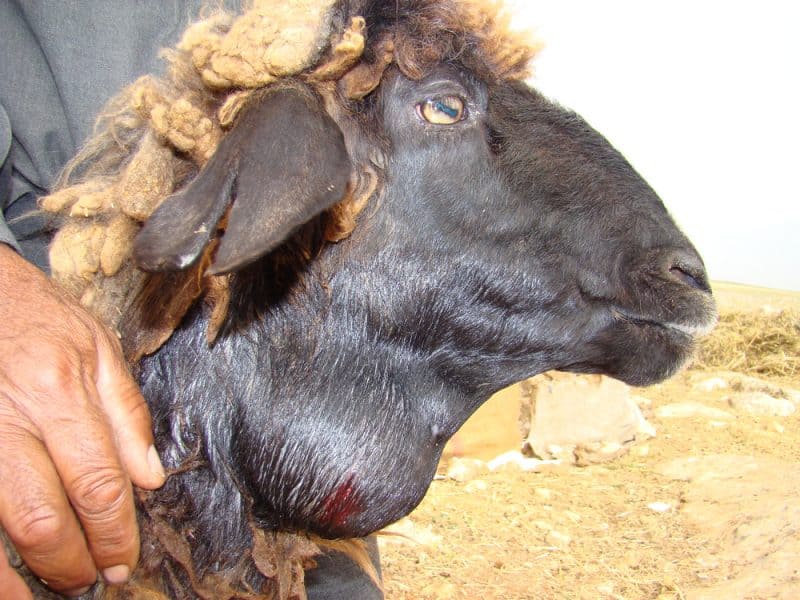
Animals become infected with this disease when bacteria enter through mucous membranes in the nose, eyes, and mouth or through an open wound. Because it takes 2-6 months for symptoms to appear, it can be tough for farmers to pinpoint exactly how or when their sheep were infected.
The first symptoms, which are generally swollen lymph nodes, appear in the neck and head, though this is not always the case. Swelling is more common in these areas because the head is the most likely to suffer from injury as an animal fights with its mates, gets splinters from a wooden hay feeder, and so on.
Again, the disease is even harder to treat because any time a sheep or goat puts her head (with a draining abscess) against anything else – be it a feeder or another animal – the fluid from the abscesses can spread the bacteria.
As the lesions in the lymph nodes get larger, the abscesses will begin to leak pus, generally in a yellow, white, or grey color. These abscesses can cause severe damage to normal, healthy tissue and lead to secondary symptoms like difficulty eating, breathing, and ruminating.
Other symptoms vary depending on where on the sheep’s body the abscess is found. For example, if your sheep has numerous abscesses in the lungs, there might be symptoms like respiratory distress and loss of appetite.
How to Prevent Caseous Lymphadenitis
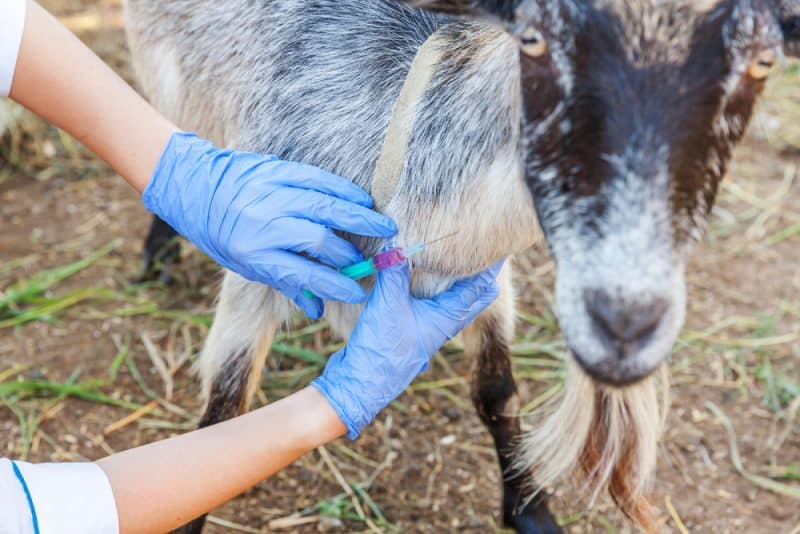
There are several ways you can prevent CL from decimating your flock. Here are some tips.
1. Vaccinations
The easiest and most effective way to prevent CL is to vaccinate your flock. Unfortunately, a vaccine is only available for goats in the US. There is a vaccine available for sheep in Canada but not in the US. This vaccine should not be used on goats because it can cause serious side effects.
2. Thorough Inspections
The good news about CL is that it doesn’t always prove to be deadly. In goat herds, this disease is extremely common (it is less common in sheep). A Quebec study examined more than 150 goats and found that CL abscesses were found in nearly a quarter of all animals, but only caused the deaths of about 4% of all animals.
That said, sheep are more vulnerable, with infection and morbidity rates reaching as much as 50%, particularly in older flocks. Once infected, even if asymptomatic, an animal is a carrier for life.
Many times, an animal will not show any symptoms with the only abscesses formed being internal. Sheep are more likely to form internal, rather than external, abscesses, while goats are the opposite.
Regular inspection can help you rule out the presence of the CL-causing bacteria in the flock. If you have one sheep with an external abscess, there’s a good chance that many have abscesses either internally or externally.
This is especially important when introducing new animals. Check them over carefully for signs of infection. Regardless of whether you find anything, keep them separate for at least 30 days to make sure they are healthy.
3. Cleaning
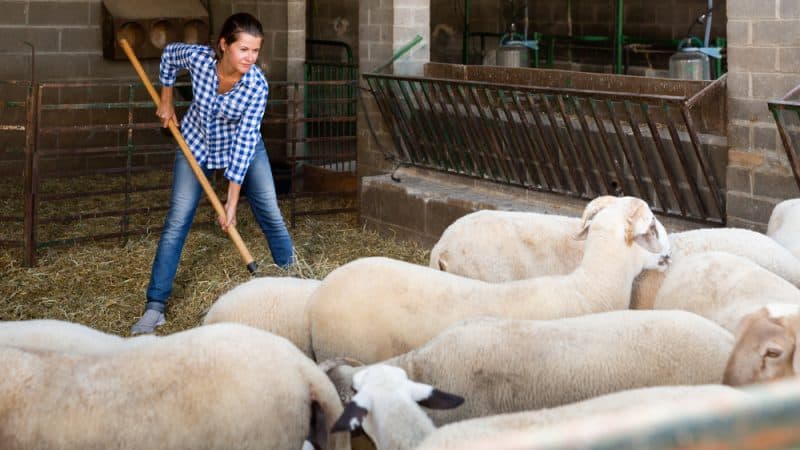
Aside from a vaccination program, cleaning is the next best thing you can do to prevent CL. Make sure your stalls, barns, trailers, and all equipment is clean and sanitized as often as possible to prevent the spread of bacteria.
4. Rotate Pastures
If you have CL, rotate your pastures. Abscesses often rupture on their own and leak bacteria onto the soil or grass. Because of this, you should move your animals to new ground to be completely safe. CL bacteria can live in the soil for up to 8 months.
How to Treat Caseous Lymphadenitis
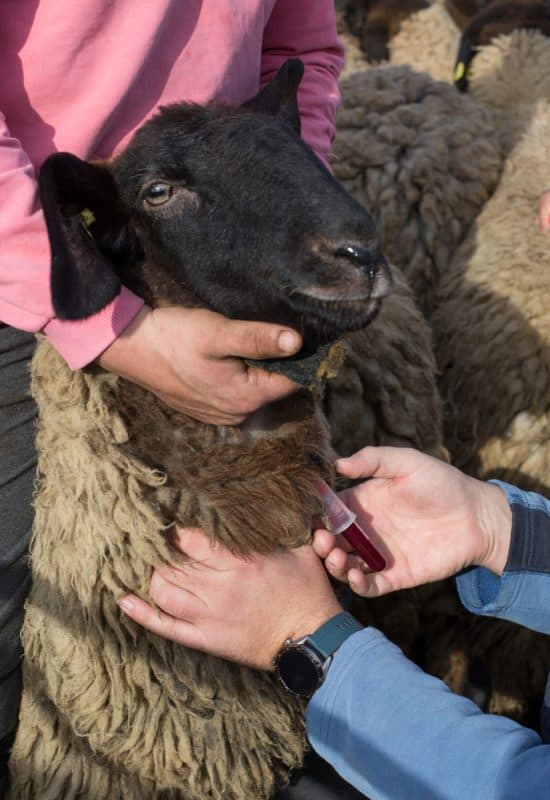
Treating CL effectively starts with a proper diagnosis. You must get help from a veterinarian if you suspect this disease. Generally, if there is a history of CL in a herd or flock, that’s enough to assume that this disease is what is making your animals sick. If there isn’t a history, a biopsy of an abscess can be sent to the laboratory for testing.
1. Blood Test
Before treating your sheep or goat for CL, your veterinarian will likely order a blood test. This is the best way to tell if there is a CL infection, particularly if it’s early on and there aren’t abscesses yet. If you have one animal infected and showing symptoms, you can order a blood test to identify infection in other animals in the flock or herd, too.
2. Quarantine
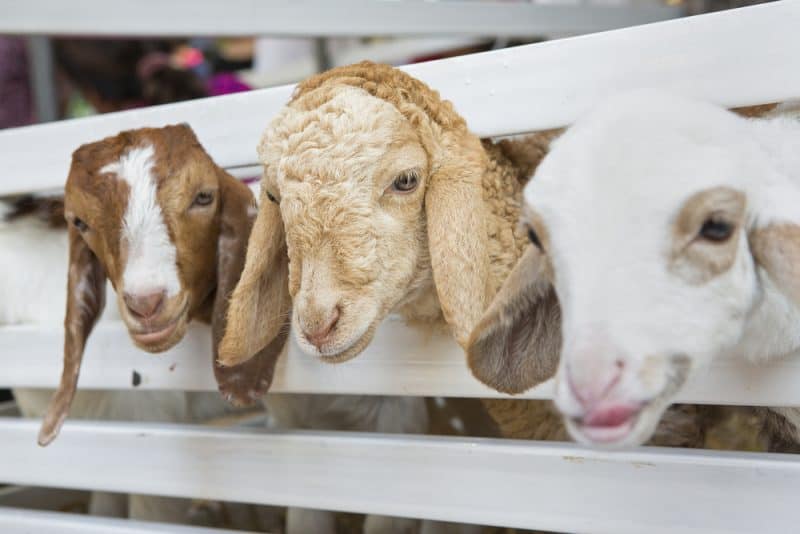
Since CL is so contagious, you’ll need to quarantine all infected individuals while they are being treated. This can help prevent the infection from entering the herd. Of course, you’ll need to practice good biosecurity too – for example, changing shoes when you move between barns, cleaning all tools and stalls regularly, and milking infected animals last in the rotation.
Disinfection and sterilization are key when it comes to eradicating this disease. It is so infectious and difficult to treat that cleanliness is key.
3. Avoid Breeding
It doesn’t heal CL, but it can help lessen the spread. If you have animals that are known to have CL, do not allow them to breed. This can minimize close contact and also prevent the transmission of the bacteria via the milk to young animals. This is rare but has been known to happen.
4. Removing Abscesses
Because the chief symptom and complaint of CL is the abscess, one of the simplest ways to treat this disease is to surgically remove or drain an abscess. If you decide to do this, plan on keeping your sheep or goat in isolation for at least 20-30 days, since it will spread the bacteria until the abscess has totally healed.
If you’re thinking about completely removing – rather than just draining – the abscess, don’t attempt it unless you are a veterinarian or under the supervision of one. In most cases, your animal will need to be anesthetized.
Antibiotics for CL?
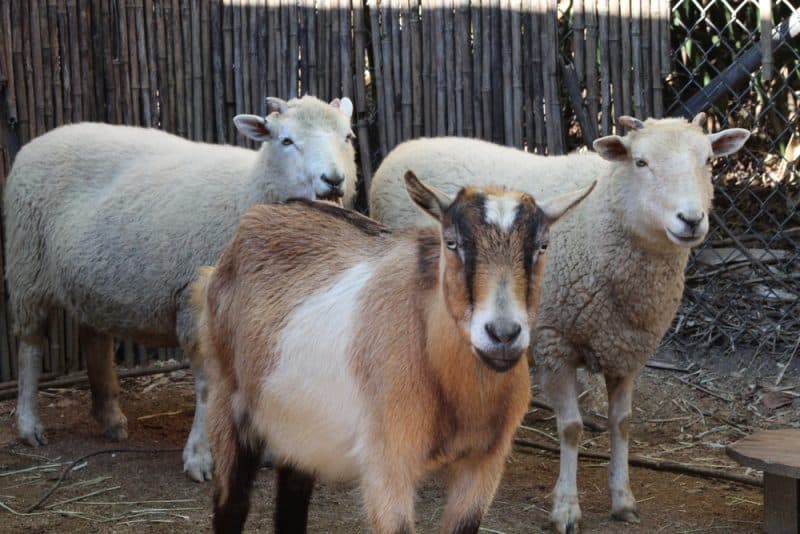
Unfortunately, unlike most bacterial diseases that might befall your sheep, CL doesn’t respond well to most antibiotics. There are very few studies on CL in goats and sheep, particularly when it comes to dose, type, and withdrawal times for various antibiotics.
Don’t try to use an antibiotic to get rid of this disease as it can increase the likelihood of antibiotic resistance. This can have disastrous effects if and when you ultimately need to treat your herd for another disease that does respond well to antibiotics.
Instead, choose one or several of the prevention and treatment methods for CL listed above. This will help you keep your animals healthy without introducing any new problems.
